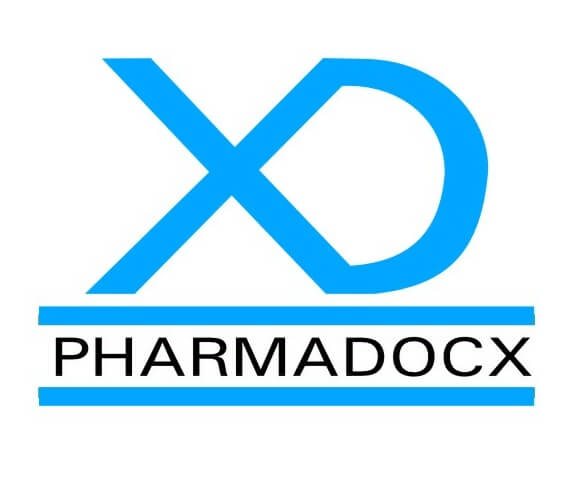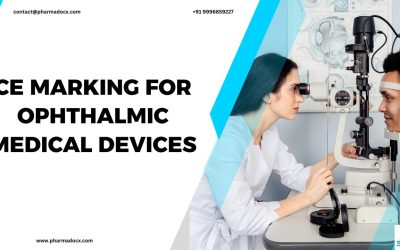Medical device single audit program (MDSAP) aims to accelerate international medical device regulatory harmonization. This streamlined, efficient, and effective regulatory model promotes worldwide alignment of international regulatory requirements. MDSAP helps medical device manufacturers target multiple new global markets with a single streamlined regulatory audit system. Moreover, it minimizes business disruptions that occur owing to several different regulatory audits. Additionally, it will the reduce the time and cost associated with conducting multiple different audits. We have prepared this detailed guide to help you easily get the MDSAP certification.
What is medical device single audit program (MDSAP)?
Medical device single audit program (MDSAP) allows medical device manufacturers to undergo a single audit to meet the regulatory requirements of multiple countries. The countries covered are Australia, Brazil, Canada, Japan, and the United States. This comprehensive third-party single audit process is conducted by authorized Auditing Organizations. The MDSAP certification reduces the need for multiple audits and enhances international market access. Basically, it simplifies regulatory processes, saves time, and helps demonstrates a commitment to quality standards of multiple countries.
Countries participating in MDSAP
- MDSAP members: Health Canada,Therapeutic Goods Administration of Australia, Brazil’s Agência Nacional de Vigilância Sanitária, U.S. Food and Drug Administration, and Japan’s Ministry of Health, Labour and Welfare and the Japanese Pharmaceuticals and Medical Devices Agency
- MDSAP official observers: Singapore’s Health Sciences Authority, European Union, The World Health Organization (WHO) Prequalification of In Vitro Diagnostics (IVDs) Programme, and United Kingdom’s Medicines and Healthcare products Regulatory Agency
- MDSAP affiliate members: Argentina’s National Administration of Drugs, Foods and Medical Devices, Ministry of Health of Israel, Taiwan Food and Drug Administration, South African Health Products Regulatory Authority, Federal Commission for Protection from Sanitary Risks of Mexico, Kenya’s Pharmacy and Poisons Board, and Republic of Korea’s Ministry of Food and Drug Safety
Who can perform the MDSAP audits for the MDSAP certification process?
MDSAP audits are performed by accredited third-party auditing organizations (AOs). These organizations are authorized by the regulatory authorities of the participating countries to perform the audit. Medical device manufacturers who wish to be MDSAP certified must refer to the MDSAP website or the websites of the participating regulatory authorities to find a suitable AO.
A step-by-step guide to MDSAP certification process
We have detailed the process of obtaining the MDSAP certification. By securing this certification, you will gain access to multiple global markets participating in this streamlined single audit program.
1. Understand the MDSAP regulatory framework
The MDSAP audit scope covers ISO 13485:2016 guidelines and the specific regulatory requirements of the participating countries. The MDSAP certification audit process is based on seven key steps. Management; device marketing authorization and facility registration; medical device adverse events and advisory notices reporting; measurement, analysis, and improvement; design and development; production and service controls; and purchasing are the steps involved. It is important to have a clear understanding of the MDSAP regulatory framework to undergo the certification process.
2. Prepare for the audit
Ensure your quality management system adheres to ISO 13485:2016 guidelines and regulations of the participating countries. Additionally, conduct a thorough gap analysis. Evaluate your current QMS against the MDSAP requirements to pinpoint areas requiring improvement. Implement necessary changes and improve your QMS based on the gap analysis results. Furthermore, impart training on the MDSAP audit process and specific requirements. Finally, conduct internal audits to assess your organization’s readiness for the official MDSAP audit. Additionally, identify any remaining deficiencies that should be corrected.
3. Select a recognized auditing organization (AO)
MDSAP audits are conducted by accredited third-party auditing organizations (AOs). A list of recognized AOs can typically be found on MDSAP website or the websites of the participating regulatory authorities. Contact your chosen AO to discuss your specific needs. Obtain a quote for the MDSAP certification process. Formalize the agreement and enter into a contract with the AO.
4. Undergo the MDSAP audit
The auditing organizations (AOs) will review your QMS documentation and assess your organization’s readiness for the on-site audit. Then, the AO will conduct an on-site audit to evaluate your QMS’s compliance with ISO 13485 and the regulatory requirements of the participating countries. If nonconformities are identified during the audit, you will need to submit a plan for corrective actions within a stipulated timeframe. The timeframe provided is usually 30 days.
5. Certification and maintenance
The AO provides a comprehensive audit report detailing the findings of the audit. After successful completion of the audit and satisfactory resolution of any nonconformities, the AO issues an MDSAP certificate. The certificate will be valid for a period of three years. To maintain the certification, you will have to undergo annual surveillance audits in the following 2 years to ensure continued compliance. Notably, in the third year, a recertification audit, similar to the initial audit, will be conducted. This recertification audit will evaluate the compliance and effectiveness of your QMS.
Which countries accept MDSAP certification?
- U.S. Food and Drug Administration
- Therapeutic Goods Administration of Australia
- Brazil’s Agência Nacional de Vigilância Sanitária
- Health Canada
- Japan’s Ministry of Health, Labour and Welfare and the Japanese Pharmaceuticals and Medical Devices Agency
What is the difference between ISO 13485:2016 certification and MDSAP certification?
The main difference between ISO 13485:2016 and MDSAP is that ISO 13485:2016 is an international standard for the medical device QMS and MDSAP is a single audit program for different regulatory markets. ISO 13485:2016 is an internationally accepted QMS standard. Whereas, MDSAP is currently accepted in five countries, namely Australia, Brazil, Canada, Japan, and the United States.
Does FDA recognize MDSAP certification?
FDA recognizes MDSAP certification. FDA is one of the participating members of the MDSAP. Hence, it accepts the MDSAP audit reports.
Benefits of medical device single audit program (MDSAP)
The medical device single audit program (MDSAP) is focused on streamlining the regulatory audit process of multiple global regulated markets. MDSAP is beneficial for medical device manufacturers, regulatory bodies, and patients. We have highlighted how it is beneficial for the different stakeholders.
- Medical device manufacturers: Under MDSAP, medical device manufacturers can undergo a single audit process for multiple regulatory bodies. This single comprehensive audit will be valid for Australia, Brazil, Canada, Japan, and the United States. Basically, MDSAP will do away with the need to undergo different regulatory audits for different global regulatory bodies. Moreover, one single audit will reduce business disruptions and save resources, such as time, finances, and training. Being scheduled for a three-year period, MDSAP audits are predictable and occur at particular time points. On the other hand, multiple audits will disrupt operations. MDSAP certification demonstrates the manufacturer’s commitment to quality and compliance with international requirements.
- Regulatory bodies: Participating regulatory bodies will be assured that the MDSAP audits have been conducted in accordance with the mutually agreed terms and requirements. Hence, the QMS and manufacturing process as well as the finished product will be as per standards agreed upon by the participating country. This will also reduce the workload of individual regulatory authorities.
- Patient safety: MDSAP certification assures patients and end-users that all medical devices are safe and effective as well as are of internationally accepted quality standards.
Pharmadocx Consultants team will help you easily get the MDSAP certification
Securing the MDSAP certification will open doors to top global regulatory market places. However, complying with the MDSAP requirements, preparing the documentation, undergoing the audit, and securing the certification is not an easy task. We at Pharmadocx Consultants will help you easily navigate the MDSAP guidelines. Our team has extensive expertise in international regulatory requirements, MDSAP guidelines, and ISO 13485:2016 standards. To easily get the medical device single audit program certification, drop an email at [email protected] or call/Whatsapp on 9996859227. With our support, the certification process is going to be a cake walk.





